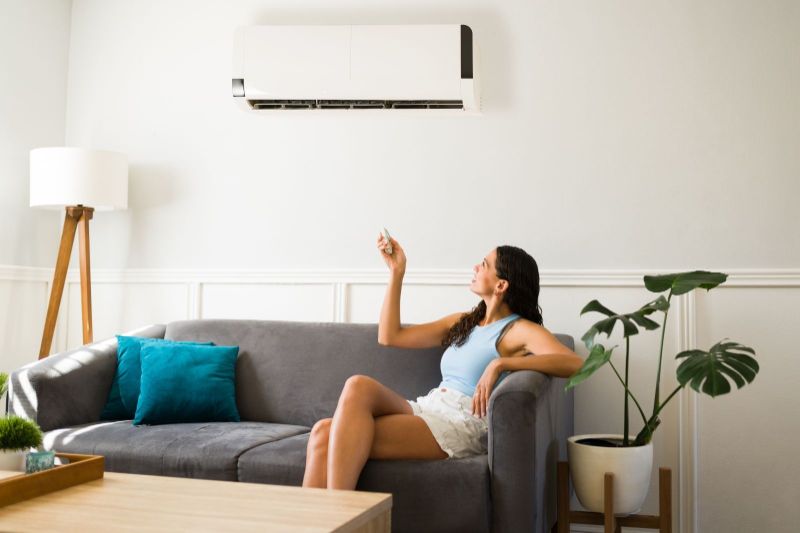When you think of water damage and the impact of humidity on the house, you typically think of humidifier use or problems with plumbing. However, an air conditioning unit is also one of the most common culprits. Let’s look at why this happens and how you can prevent it in your home.
What Is Condensation?
Condensation is the process of water vapor changing from a gas back into a liquid. In the summer, you will often see this occur inside windows, causing them to fog up. This is caused by warm indoor air hitting the more open window and turning back into the water. In your air conditioning unit, condensation happens when the air is blown through the team below the dew point of the air in your home, causing the air to turn back into the water. While this is a healthy process, it can have some adverse effects if leaks in your unit or you don’t have the proper drainage setup.
How Does Condensation Occur In AC Units?
There are two stages of cooling: heating and cooling. During the heating stage, a gas-powered compressor inside your unit compresses the gas refrigerant, raising its pressure and temperature. Next, a fan blows warm air into the refrigerant inside your home, causing it to cool down and change from a gas to a liquid. Then the cooled liquid refrigerant is then sent to the outdoor condenser unit and rereleased as a gas. However, the warm air being blown inside the AC unit has to go somewhere. It travels through your walls and ceiling ducts and then into the room. Here, it hits the cooler air inside the room, causing it to condense and turn back into the water. The water drips down from the ceiling and is collected in a tray underneath the unit. It would help if you tilted this tray toward a drain to keep it from damaging your flooring.
What Causes Condensation In An Air Conditioner?
There are a few reasons your air conditioning unit would cause excessive condensation. The first is an issue with your cooling system. If your team is not cooling the air properly, it can’t pull the warm air out of your home, causing condensation to collect. This can be caused by a clog or other problem with the system’s cooling coils. It can also be caused by a problem with your AC’s refrigerant, which can sometimes be fixed by having it recharged. The second cause of excessive condensation is poor ductwork. If your ducts are not adequately sealed, warm air will seep out, lowering the temperature of the air in the room and causing more condensation to form under the AC unit. You can check the ducts for leaks by using a duct tester.
What Are The Problems Caused By Condensation?
The most obvious problem caused by excessive condensation is damage to your ceiling and flooring. If the tray underneath your AC unit is not tilted toward a drain, the water will collect and drip down, potentially causing staining or structural damage.
How To Prevent This From Happening?
First, you want to ensure your home has the proper airflow. AC units work best with about 5-10 air exchanges per hour, meaning that all the air in your home has been replaced within an hour. This means you can’t have rooms closed off entirely, or you’ll have issues with the proper airflow. You also want to ensure your home has the appropriate duct setup. Ideally, you’ll have one central AC duct in each room with a good seal at both ends. This prevents warm air from escaping into space, causing more condensation to form. Finally, you should ensure good airflow under your AC unit. Make sure it’s not blocked by debris, and the tray is tilted toward a drain to collect any water that forms. This will keep your AC unit from causing damage to your home and ensure it runs as efficiently as possible.
There are a few reasons why your AC unit might cause excessive condensation, including improper airflow and cooling issues with your unit. This can damage your home, including mold and staining on your ceilings and flooring. To prevent this, you want to ensure you maintain proper airflow in your home and have the correct duct setup.

